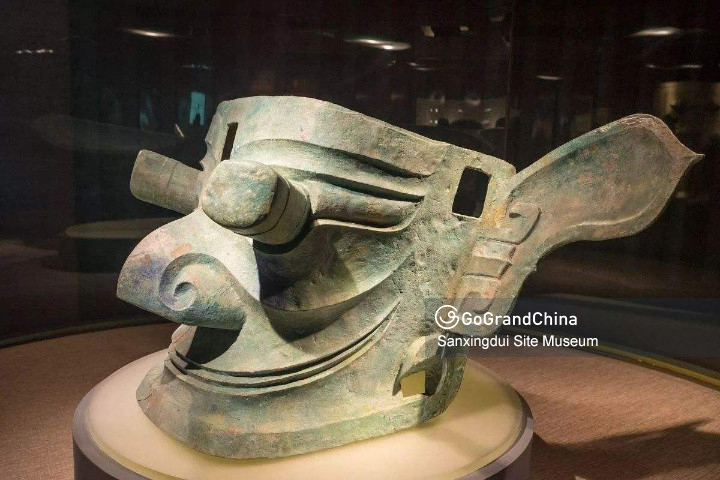

You can’t go to Chengdu and not see these 5 must see Chengdu attractions
Chengdu is one of the most-populous cities in Western China. The surrounding Chengdu Plain is known as the "Country of Heaven" and the "Land of Abundance". Chengdu is associated with the giant panda, a Chinese national symbol, which inhabits the area of Sichuan; the city is home to the Chengdu Research Base of Giant Panda Breeding. The Leshan Giant Buddha is the largest stone seated Maitreya in the world at 71 meters (233 ft) high and 24 meters (79 ft) wide. The site of Dujiangyan with a history of 2300 years, an ancient irrigation system, is the world’s oldest non-dam irrigation facility. If you’re planning a trip to Chengdu, no matter the length, there are some sights you just need to see. To help you plan your trip to Chengdu, we’ve created a list of the 5 must see Chengdu attractions for your reference. Use this as a checklist if you want to make the most out of your Chengdu trip.
Here are 5 stunning Chengdu tourist attractions you have to visit when you are in the city!
1. Chengdu Research Base of Giant Panda
Chengdu Research Base of Giant Panda Breeding, or simply Chengdu Panda Base, is a non-profit research and breeding facility for giant pandas and other rare animals founded in 1987. It started with 6 giant pandas that were rescued from the wild. There more than 100 pandas in total now living a carefree life in the base. In the Panda Base, you can find rivers, lakes, brooks, ornamental green lawns and greens, wild bamboo forests which form the panda’s natural ecological environment. You can closely observe the giant pandas of different ages resting, eating and drinking, playing with each other, using enrichment toys, or watch female pandas nursing their cubs in the nursery rooms. There is a feeding time during 9:00 - 11:00 when giant pandas are the most active in a day. Besides of giant pandas, you can also see a large amount of rare wild animals in this base, such as peacocks, white swans, and black-necked cranes. Get more about Chengdu Panda Base.
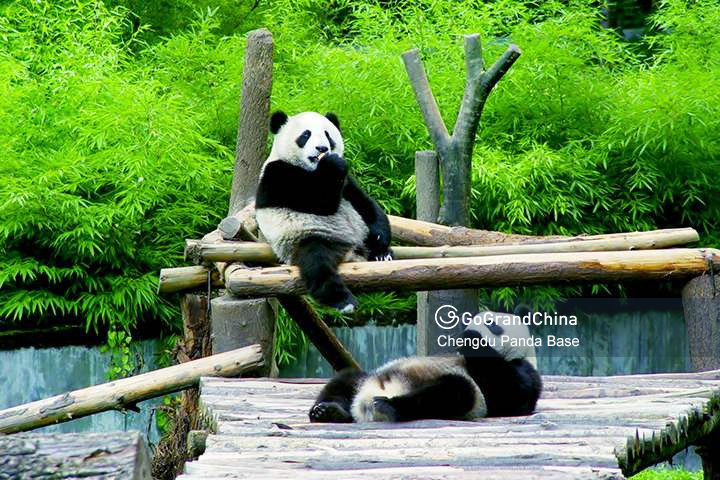
2. Leshan Giant Buddha
Carved into the side of Mt. Lingyun, the colossal statue of Leshan Giant Buddha is over 1,300-years-old and is considered to be the largest stone Buddha in the world, and by far the tallest pre-modern statue. The site attracts millions of people every year, making it something of a sacred destination and an ancient wonder of the world. The Giant Buddha sits at the junction of three rivers; the Min River, Qingyi River, and Dadu River. It faces the sacred Mount Emei with the rivers flowing below its feet. The statue is believed to be Maitreya Buddha. The appeal of the Buddha lies not only in its size but in its architectural craftsmanship. The entire statue is made of stone, except for the ears which were crafted out of wood, then affixed, and covered with clay. The Buddha’s hair is arranged in special spiraled curls with 1,021 twists that have been skillfully embedded in the head. UNESCO inscribed the Leshan Giant Buddha on the World Heritage List as a mixed cultural and natural property of the world in 1996. Get more about Leshan Giant Buddha.
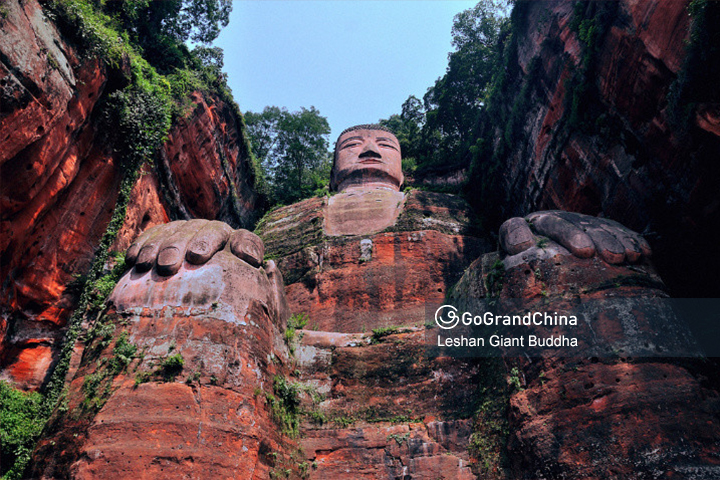
3. Dujiangyan Irrigation System
Built in 256 BC, this grand irrigation project has played a crucial role in flood prevention and irrigation for over 2,000 years and it is known as one of the great hydraulic engineering projects of ancient China. Originally constructed around 256 BC by the State of Qin as an irrigation and flood control project, the system harnessed Minjiang River using a new method of channeling and dividing the river rather than simply damming it. The water management scheme is still in use today to irrigate over 5,300 square kilometres of land in the region. After the system was finished, no more floods occurred in Chengdu plain of Sichuan province. The irrigation made Sichuan province the most productive agricultural region in China. Get more about Dujiangyan Irrigation System.
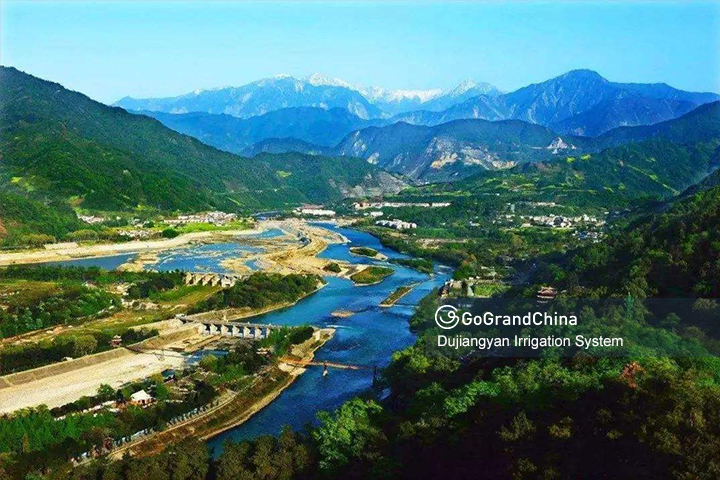
4. Mount Qingcheng
Mount Qingcheng, located in the southwest of the Dujiangyan Irrigation System, is one of the most famous Taoist mountains in China. It is also a very attractive and intriguing scenic spot that is covered by luxuriant and verdant trees. The mountain, which is surrounded by numerous peaks is dubbed 'the most peaceful and secluded mountain under heaven' and combines perfectly with its evergreen scenery. The Mount Qingcheng can be divided into two parts - the anterior part and the posterior part. The anterior part is the main part of the scenic spot, covering an area approximately 15 square kilometers (about 3706 acres) that possesses alluring natural beauty and an abundance of cultural relics and historic sites. Among them, the Jianfu Palace, the Shangqing Palace, and the Tianshi Cave are some of the most famous destinations which you are bound to be engrossed by. Get more about Mount Qingcheng.
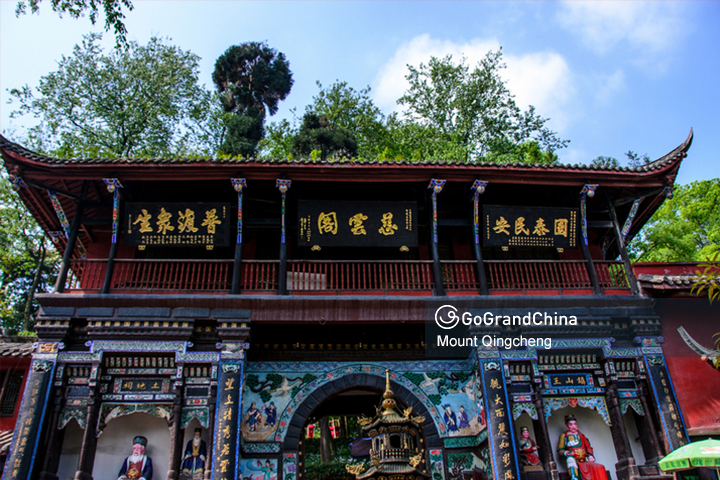
5. Sanxingdui Site Musuem
The Sanxingdui Site is located in the west suburb of Guanghan city, in Sichuan Province. With the ancient city as the core, the site covers an area of 600 hectares. This is a large city site existed for a very long time. It had become the cultural center of Bronze Civilization in Sichuan Basin since around 1800 B.C. The city was enclosed by high earthen city walls in an area of 360 hectares with clear function zoning: taking the east-west direction river across the city as the central line, in the north large palaces were built on the earthen terrace, in the south was the religious area symbolized by sacred temples, while in the northwestern suburb were the tombs. Great changes took place in around 1200 B.C.: temples were buried down and vessels in the temples were damaged and buried, which could be proven by more than 6,000 pieces of valuable cultural relics unearthed from the two sacrificial pits. Get more about Sanxingdui Site Museum.
